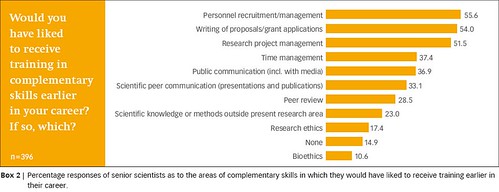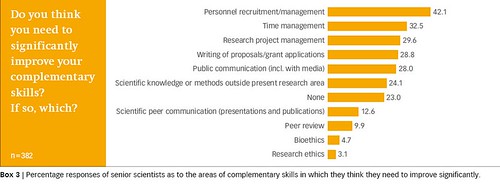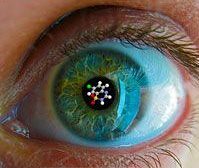The 15th biannual conference of the European Association of Museums for the History of Medical Sciences (EAMHMS) will be held at the University of Copenhagen, 16–18 September, 2010.
This year’s conference focuses on the challenge to museums posed by contemporary developments in medical science and technology.
The image of medicine that emerges from most museum galleries and exhibitions is still dominated by pre-modern and modern understandings of an anatomical and physiological body, and by the diagnostic and therapeutical methods and instruments used to intervene with the body at the ‘molar’ and tangible level — limbs, organs, tissues, etc.
The rapid transition in the medical and health sciences and technologies over the last 50 years — towards a molecular understanding of human body in health and disease and the rise of a host of molecular and digital technologies for investigating and intervening with the body — is still largely absent in museum collections and exhibitions.
As a consequence, the public can rarely rely on museums to get an understanding of the development and impact of the medical and health sciences in the last 50 years. Biochemistry and molecular biology have resulted in entirely new diagnostic methods and therapeutic regimes and a flourishing biotech industry. The elucidation of the human genome and the emergence of proteomics has opened up the possibility of personalised molecular medicine. Advances in the material sciences and information technology have given rise to a innovative and highly productive medical device industry, which is radically transforming medical practices. But few museums have so far engaged seriously and in a sustained way with these and similar phenomena in the recent history of medical sciences and technologies.
The contemporary transition in medical and health science and technology towards molecularisation, miniaturisation, mediated visualisation, digitalisation and intangibilisation is a major challenge for the museum world; not only for medical museums, but also for museums of science and technology, and indeed for all kinds of museums with an interest in the human body and the methods for intervening with it, including art museums, natural history museums and museums of cultural history.
Contemporary medicine is not only a challenge to exhibition design practices and public outreach strategies but also to acquisition methodologies, collection management and collection-based research. How do museums today handle the material and visual heritage of contemporary medical and health science and technology? How do curators wield the increasing amount and kinds of intangible scientific and digital objects? Which intellectual, conceptual, and practical questions does this challenge give rise to?
The meeting will address questions like (but not limited to):
- How can an increasingly microanatomical, molecularised, invisible and intangible (mediated) human body be represented in a museum setting? Does the post-anatomical body require new kinds of museum displays?
- How can museums make sense of contemporary molecular-based and digitalised diagnostic and thereapeutic technologies, instrumentation and investigation practices in their display practices?
- How can museums make use of their older collections together with new acquisitions from contemporary medicine and health science and technology?
- What is the role of the visual vs. the non-visual (hearing, smell, taste, touch) senses in curatorial practice and in the public displays of contemporary medical science and technology?
- What can museums learn from science centers, art-science event venues etc. with respect to the public engagement with contemporary medical science and technology? And, vice versa, what can museums provide that these institutions cannot?
- How can museums draw on bioart, ‘wet art’ and other art forms to stimulate public engagement with the changing medical and health system?
- How does physical representations of contemporary medicine in museums spaces relate to textual representations in print and digital representations on the web?
- How can museums integrate emerging social web technologies (Wikipedia, Facebook, Twitter, blogs, etc.) in the build-up of medical and health exhibitions?
- What kind of acquisition methods and policies are needed for museums to catch up with the development of contemporary medical science and technology, especially the proliferation of molecular and digital artefacts and images?
- What kind of problems do museum encounter when they expand the acquisition domain from traditional textual, visual and tangible material objects to digital artefacts (including software, audio- and videorecordings, and digitally stored data) and non-tangible scientific objects.
- How can participatory acquisitioning, crowd-sourcing, wiki-based methods, etc. (‘museum 2.0’) be employed for the preservation and curation of the contemporary medical heritage?
- How can curatorial work in museums draw on medical research and engineering and on academic scholarship in the humanities and social sciences? And, vice versa, how can museums contribute to medical teaching and research and how can their collections stimulate the use of physical objects in the humanities and social sciences?
The conference will employ a variety of session formats. In addition to keynotes and sessions with individual presentations of current research and curatorial work there will also be discussion panels and object demonstration workshops.
We welcome submissions from a wide range of scholars and specialists — including, for example, curators in medical, science and technology museums; scholars in the history, philosophy and social studies of medicine, science and technology; scholars in science and technology studies, science communication studies, museum studies, material studies and visual culture studies; biomedical scientists and clinical specialists; medical, health and pharma industry specialists with an interest in science communication; engineers and designers in the medical device industry; artists, designers and architects with an interest in museum displays, etc.
We are especially interested in presentations that involve the use of material and visual artefacts and we therefore encourage participants to bring illustrative and evocative (tangible or non-tangible) objects for demonstration.
The meeting will begin on Thursday 16 September (noon) and end on Saturday evening 19 September, 2010.
100-300 word proposals for presentations, demonstrations, discussion panels, etc. shall be sent before 28 February 2010 to the chair of the program committee, Thomas Soderqvist, ths@sund.ku.dk.
A meeting website for registration and hotel bookings will be established in early January 2010. A number of hotel rooms will be prebooked.
Programme committee:
Ken Arnold, Wellcome Collection, London
Robert Bud, Science Museum, London
Judy Chelnick, National Museum of American History, Washington, D.C.
Mieneke te Hennepe, Boerhaave Museum, Leiden
Thomas Soderqvist, Medical Museion, University of Copenhagen (chair).
Local organising committee:
Anni Harris, Bente Vinge Pedersen, Carsten Holt, Morten Bulow and Thomas Soderqvist, Medical Museion, University of Copenhagen.
For further information about the academic programme, please contact Thomas Soderqvist, ths@sund.ku.dk. For practical information about travel, accommodation, etc., see http://www.mm.ku.dk/sker/eamhms.aspx, or contact Anni Harris, konference2010@sund.ku.dk after 4 January 2010.
The conference is hosted by Medical Museion; further information will be posted on the museum’s website (www.museion.ku.dk) and on this blog.




